The following is an introductory guide to finding your way around the night sky in the northern hemisphere. In this day and age, there are wonderful desktop and mobile apps to aid you in locating objects in the night sky. However, nothing beats having a basic knowledge about the night sky. It will actually help you get more enjoyment out of your programs.
This guide is geared toward finding the twelve constellations of the "Zodiac." These twelve constellations lie along the path of "travel" of the Sun and the planets. (This path is called the ecliptic.) This guide won't help you find the planets themselves, but it will help you find the general areas in which to look for them.
The night sky diagrams herein are screenshots from the Stellarium program. I used the GIMP to draw the arrows.
Constellations and Asterisms
My night sky tips are based on patterns commonly seen in stars. Both constellations and asterisms are star patterns. Some star patterns are recognized by the International Astronomical Union. These are called constellations. The history of constellations reaches far back into history. Star patterns that are not constellations are called asterisms. Often, an asterism is formed out of the brighter stars in a constellation. For example, the Big Dipper is an asterism. It's actually part of the constellation Ursa Major.
The Big Dipper
Let's begin to find our way around using the Big Dipper.The North Star (Polaris)
The Big Dipper is a familiar sight to almost everyone. As kids, we learn to follow the bowl stars to the North Star.
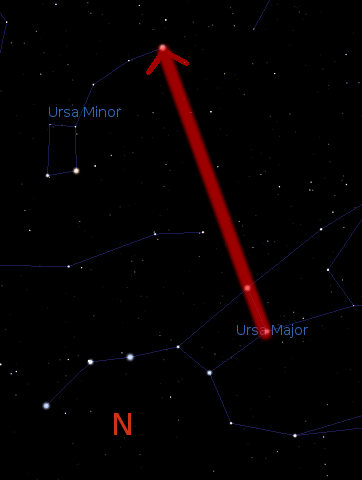
Leo
One thing many people don't learn is that the Big Dipper can be put to more use than for just finding the North Star. If you follow the bowl stars the other way, you will arrive at the constellation Leo. The prominent part of Leo is an asterism called The Sickle.
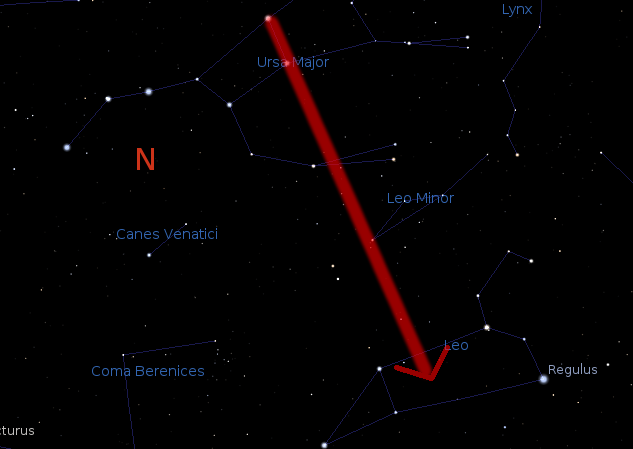
Virgo
You can use the handle of the Big Dipper to find Virgo. You must find Arcturus first. Then you will find Spica, the prominent star in Virgo. The saying goes, "Make an arc to Arcturus, and a spike to Spica.
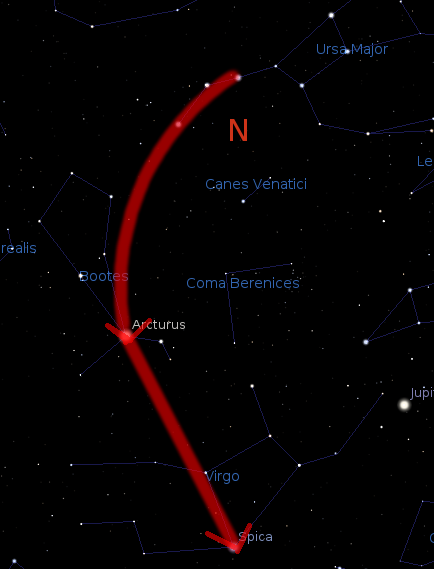
Cassiopeia
When you can't see the Big Dipper, look for Cassiopeia. It looks like a W. One or the other is always visible. Cassiopeia can also be used to locate the North Star.
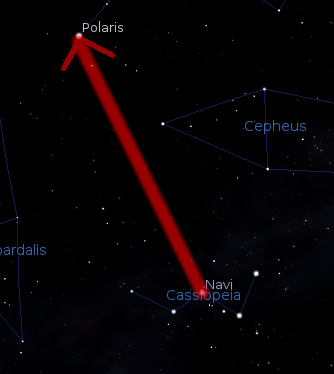
Andromeda and Pisces
Cassiopeia can also be used to find the constellations of Andromeda and Pisces, as shown in the following diagram.
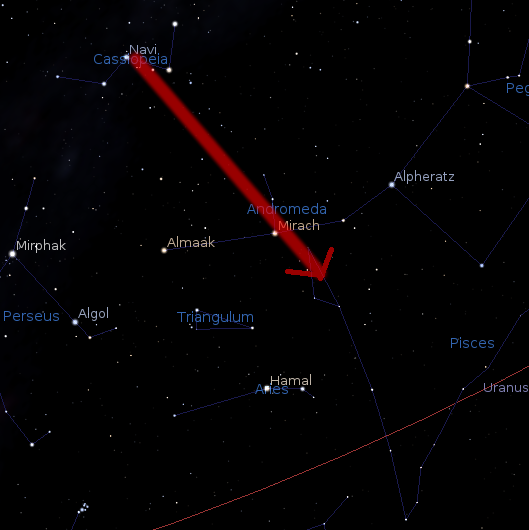
Orion
Another pattern that people tend to easily recognize is the constellation Orion. The part of Orion that people usually recognize first is an asterism called "Orion's Belt." Orion's belt is commonly used to locate the star Sirius. Sirius is the brightest star. Orion and Sirius are pictured below.

Taurus
If you follow Orion's Belt away from Sirius, you will find Taurus. Its most prominent star is called Aldeberan.
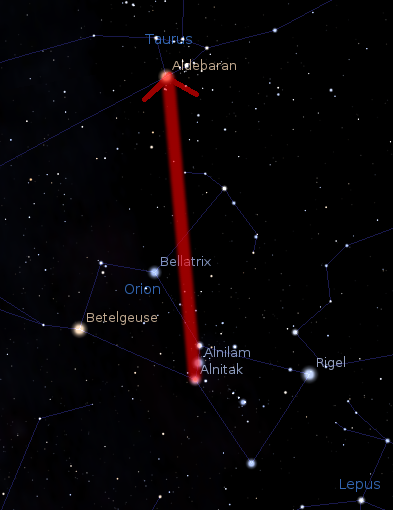
Gemini
If you follow the path through Orion's prominent "corner" stars, Rigel and Betelgeuse, you will arrive at the constellation Gemini, and its two prominent stars Castor and Pollux. (Indicentally, when I was a kid, I got no end of amusement out of learning that Betelgeuse is pronounced "Beetle Juice.")
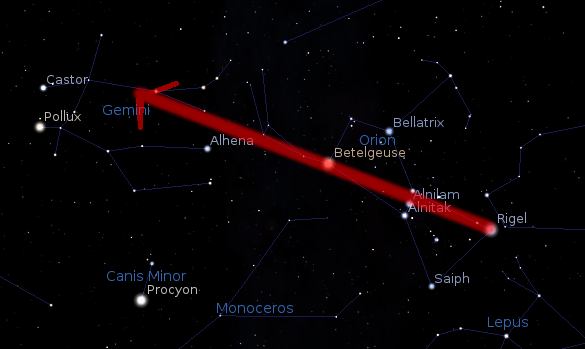
Incidentally, two "corner" stars of the Big Dipper can also be used to find Gemini.

Pisces and Aquarius
If you follow a path through Orion's "feet", you will come to the constellation Pegasus, marked by its asterism, The Square of Pegasus. Pisces and Aquarius are in the vicinity of that square.
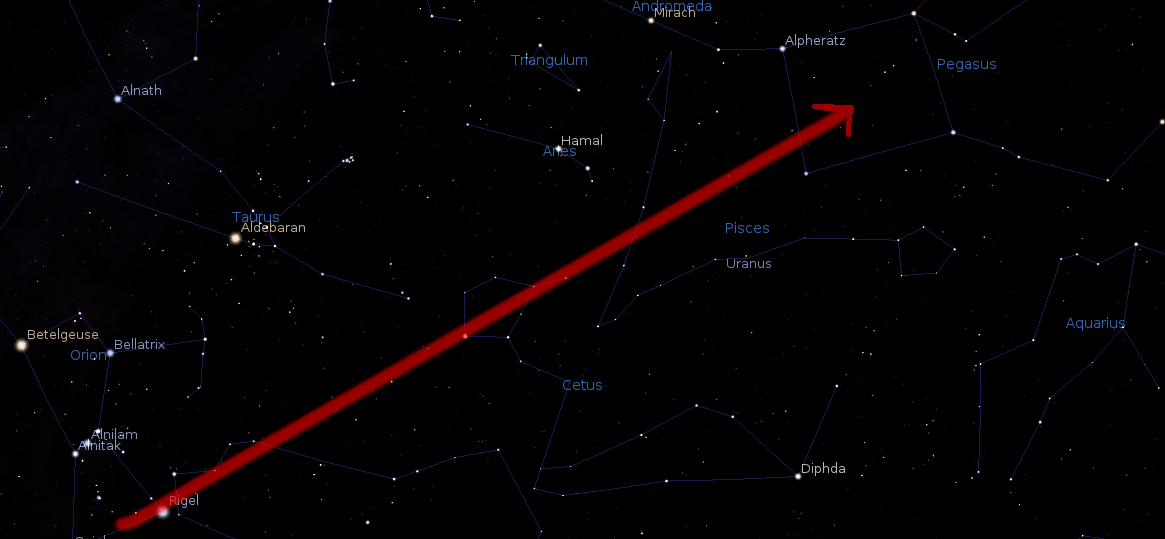
Other Zodiac Constellations
There are no hard and fast rules for finding the rest of the Zodiac constellations. But, they're not hard to find when you have the information you've already learned here.
Libra and Scorpius
You already know how to find the stars Arcturus and Spica. If you follow a line through Spica perpendicular to the "spike", you will come to Libra and Scorpius. Libra is unremarkable. The prominent star in Scorpius is Antares.
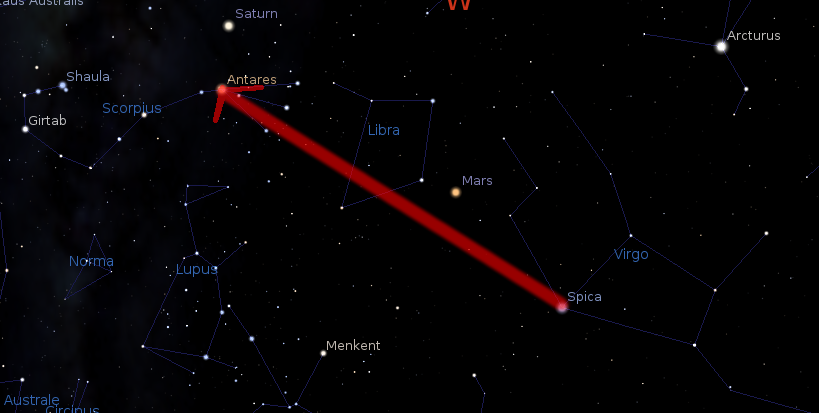
Sagittarius and Capricornus
There's nothing that makes Sagittarius and Capricornus stand out, but once you find Antares, you can find the general area of these two constellations.
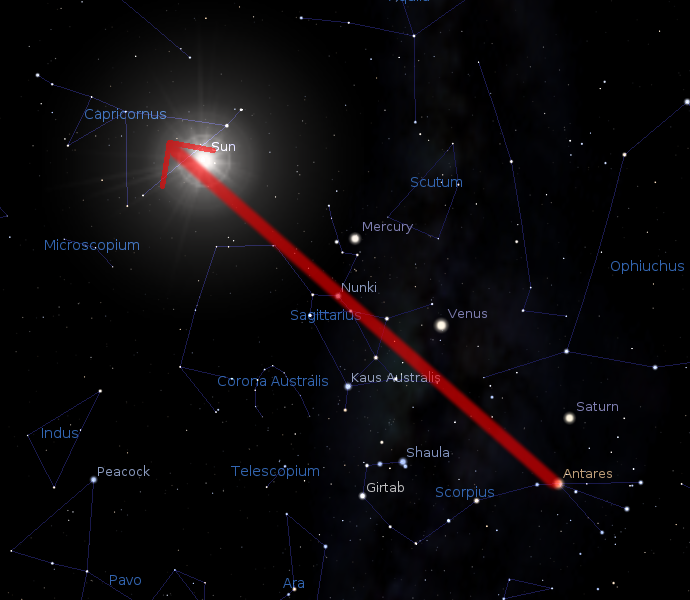
Cancer
Cancer lies between Leo and Gemini.

Aries
Aries is a small constellation and difficult to see. It is significant because the Sun is at the "first point" in Aries at the vernal (spring) equinox. First find the Andromeda constellation. It can be found using either Cassiopeia or the Square of Pegasus.

Vega
Vega has been popularized by the so-called "Vegan" diet. Some will want to find it, so I'm including it here. You can use either the Big Dipper or Cassiopeia to find it.
